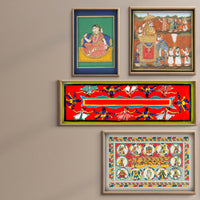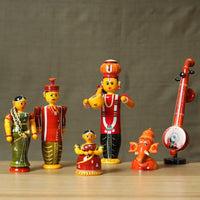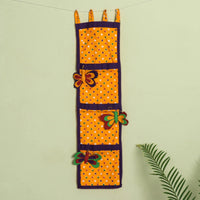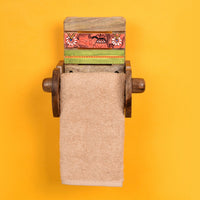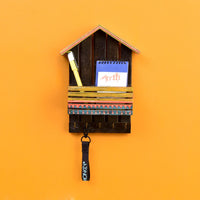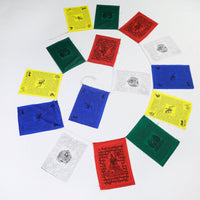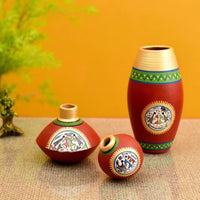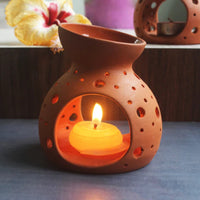Significance Of Lighting Diyas On Deepavali
Indians light handmade diyas during Deepavali, the festival of lights. The word ‘Deep’ refers to light and ‘Deepavali’ means a row of lights. They adorn every Hindu’s front porch, lighting the pathway. Diyas signify purity and goodness and this light depicts disseminating darkness into light. It shows the triumph of light over dark, good over evil, hope over despair, and knowledge over ignorance.
Hindus celebrate Deepavali on the new moon day or Amavasya, Kartik Masam’s 15th day. On this day, there is darkness everywhere. These small lamps rid Hindus of evil and darkness. You can buy diyas online that are uniform to make your home look better.
These lamps are believed to dispel anger, and greed with other vices. The oil in the diyas signifies any dirt in humans. These refer to lust, hate, envy, and greed amongst others. On the other hand, the cotton in the diyas symbolises humans’ aatma or soul. The illumination of the lamps shows the riddance of materialistic thoughts and greed. Getting rid of these thoughts eventually leads Hindus to Moksha or enlightenment.
Furthermore, a diwali diya symbolises good luck. Although Hindus traditionally used clarified butter or ghee in diyas, it’s common to use oil now. Every corner of the house is lit with diyas to ensure that evil forces are weakened.
According to legends, these small diyas should be bought on Ashwin Purnima, the full moon day, about two weeks before Diwali.
Importance Of Clay Diyas
A clay diya symbolises fire as an element. Fire is one of the five main elements, namely earth, fire, water, air, and sky. Fire represents purity. According to Hindus, when something or someone comes in contact with fire, they get purified. An example of this is impure gold that melts into pure gold.
When you burn diyas in front of God, you show your devotion and gratitude. Diyas are a devotional service for Him. Since God is said to maintain the entire universe and supply living beings with any items they need in the long run. Lighting diyas in front of god shows our reciprocation of affection and service.
According to traditions, every Hindu household must light a diya near the altar of their God every day. Some houses follow this by lighting the lamp twice a day. In some states, lighting a diya continuously is a tradition. This is known as Nandadeep or Akhanda Jyothi.
Every festival, no matter its significance, has Hindus lighting up a diya in front of God. Light of the diya shows knowledge and ignorance. Since God is considered the ‘Chaitanya’ or knowledge principle and the source and illuminator of knowledge, the light is considered God.
Knowledge triumphs over darkness and Hindus achieve inner wealth by bowing down to the greatest form of wealth and knowledge- light. Buy a stylistic Deepavali Diya online to decorate your God’s altar with knowledge and light.
iTokri Presents A Stunning Range Of Diwali Diyas
Guide To Use Diyas
Yes, Diyas are soaked in water to ready them before Diwali pooja. You should soak them in water until they saturate. You need to soak diyas to cleanse them and segregate any damaged ones. When you soak them in water, you become aware of any holes or cracks in them.
Another reason why diyas are soaked is that the clay absorbs water instead of oil. This way, the diyas stay ignited for longer. You can buy diwali diyas online 15 days before diwali on Ashwin Purnima or the full moon day.
How Many Diyas Should Be Lit On Choti And Badi Diwali?
When South India celebrates Deepavali, the North celebrates Choti Diwali. North India celebrates Badi or the main Diwali a day later. Hindus celebrate Badi Diwali with crackers, Lakshmi pooja, new clothes, sweets, and many lights.
On the first day of Diwali, Dhanteras, the day before Choti Diwali, Hindus light up 13 used earthen lamps. The diyas are said to protect the family from death. These13 old diyas are kept near the garbage outside the house, facing south and ward off evil. You can buy Deepavali diya set online to make this row of beautiful diyas look prettier.
On Choti Diwali, individuals light either 11 or 14 diyas. While on Badi Diwali, during the Lakshmi and Ganesh pooja, individuals light 31 diyas. One of these diyas must stay lit throughout the night. North Indian Hindus stay up all night to ensure that the lamp stays ignited. It’s also believed that the Goddess of Wealth, Goddess Sarasvati, will enter their homes and bless them with prosperity. That’s why the doors are kept open too.

